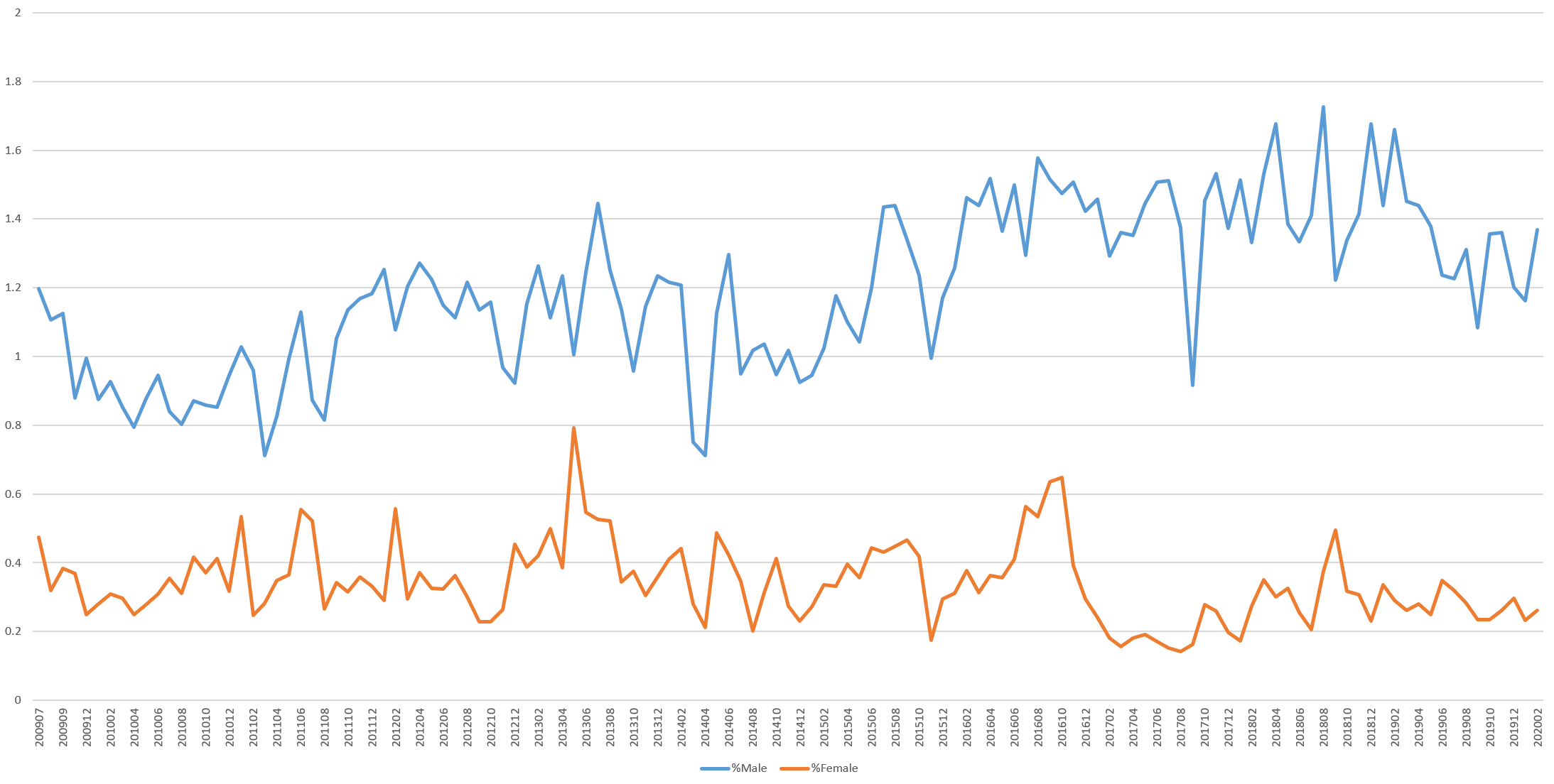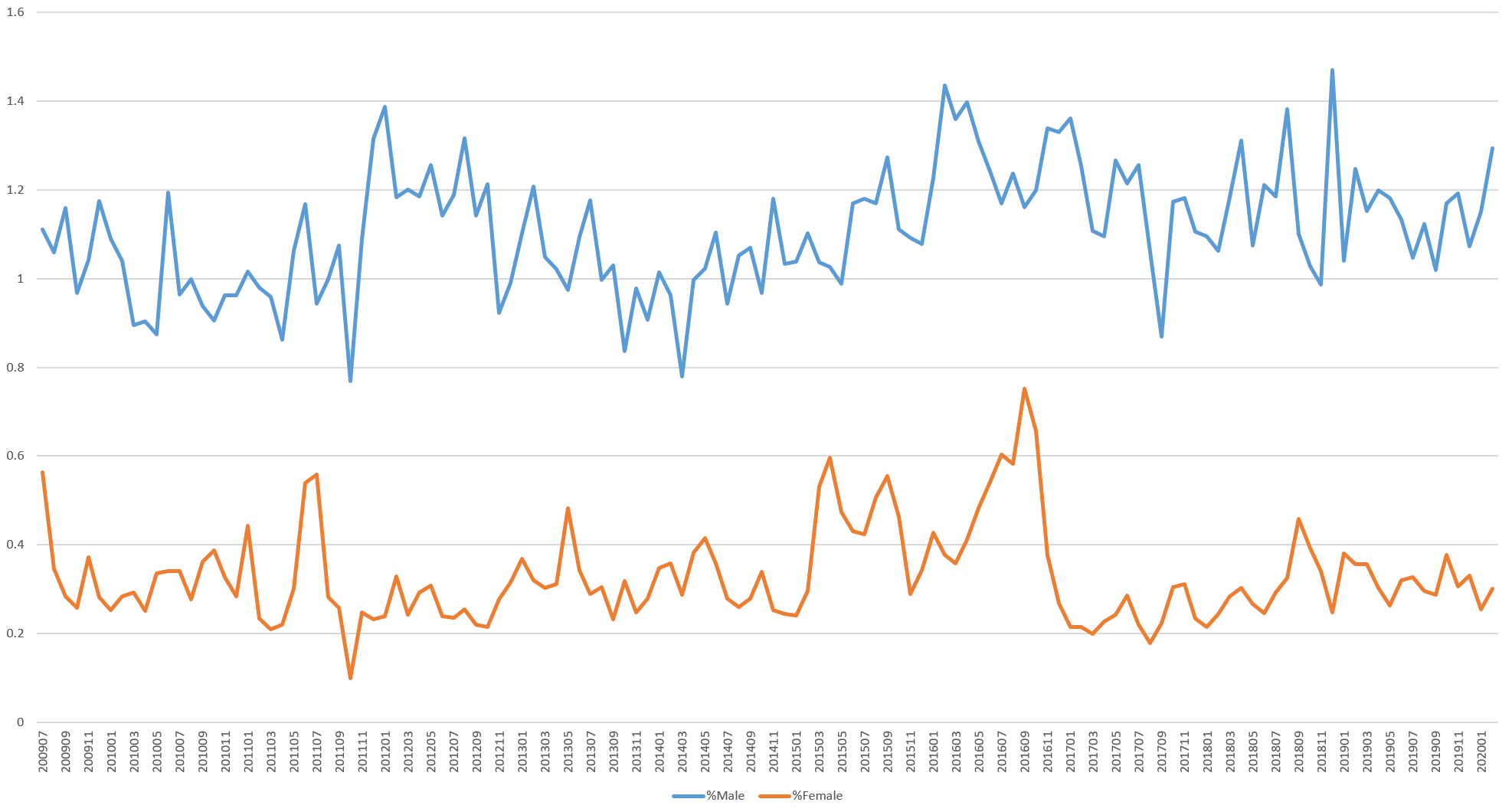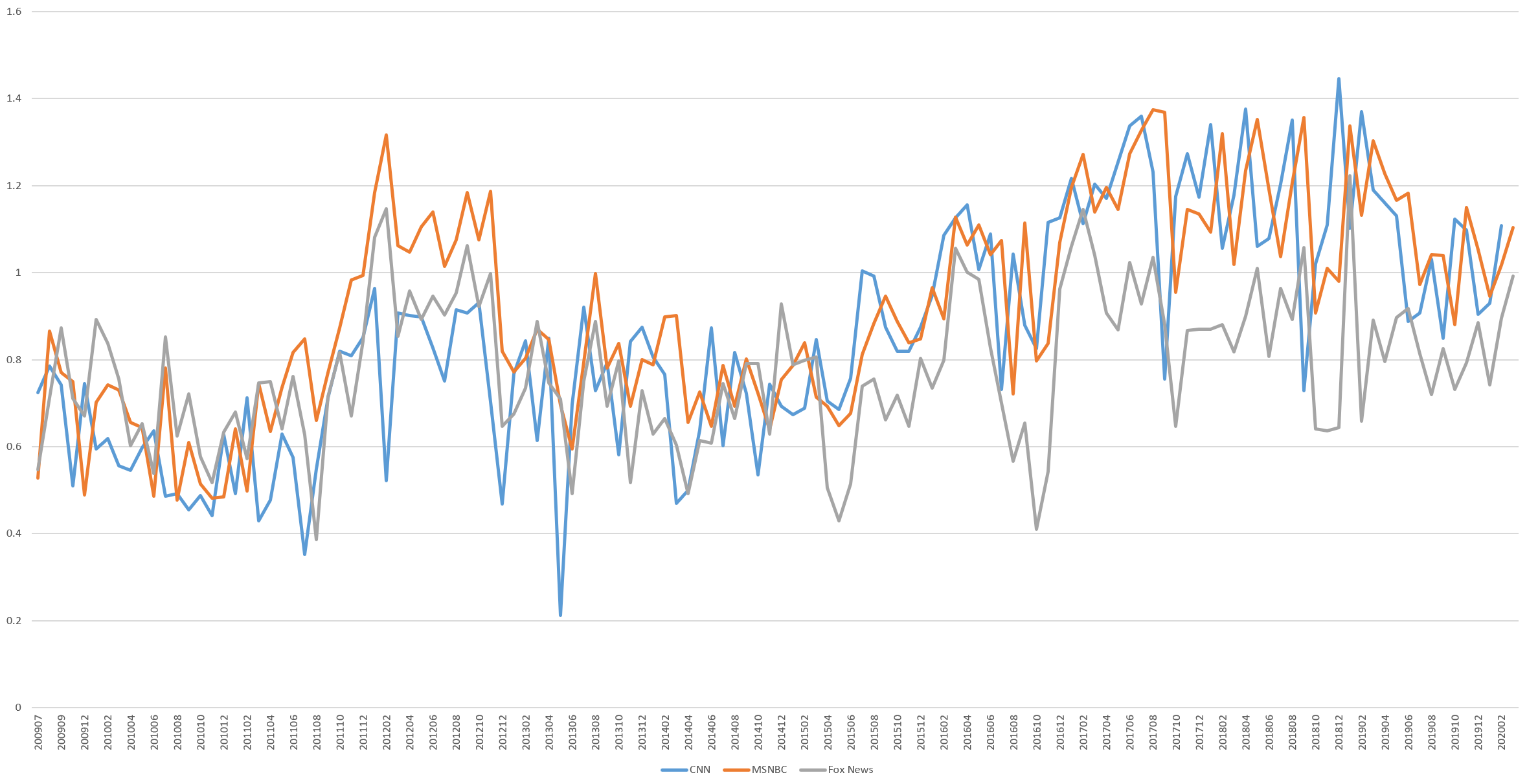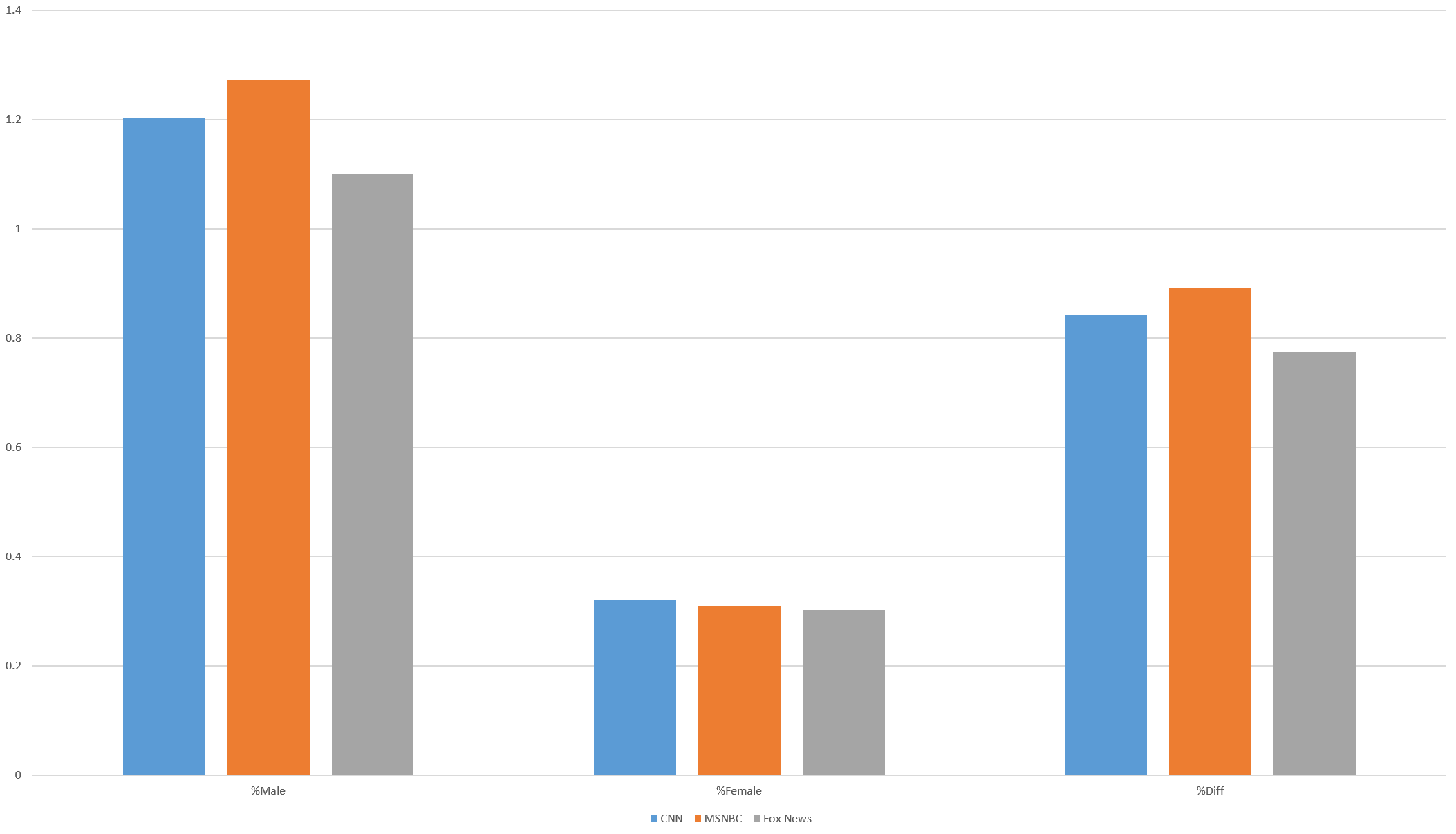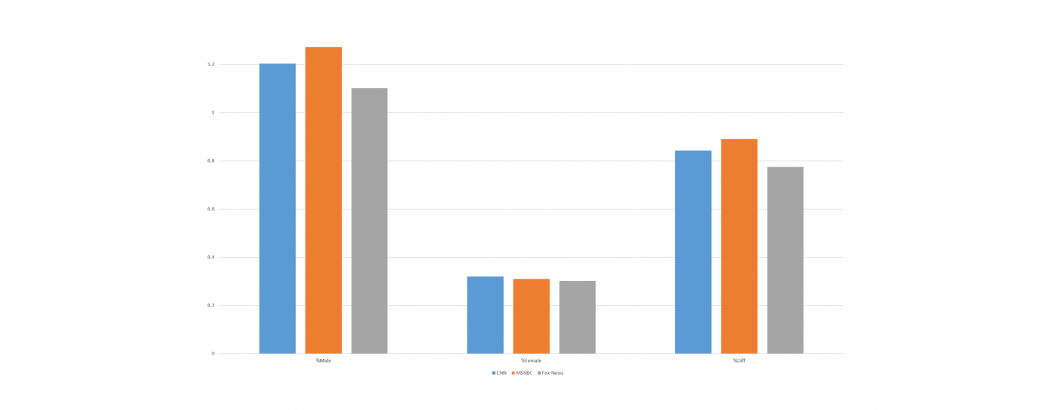
As society increasingly explores the concept of "gender" beyond the traditional binary "male" and "female" labels, how much is the news media reinforcing these traditional labels by using gendered pronouns and to what degree do they favor "male" gendered pronouns over "female" ones?
Last year we looked at the use of "ourside" versus "theirside" group pronouns in television news using the Television News NGrams Dataset. Using the same dataset and query, what does it look like to trace usage of gendered pronouns? Specifically, the traditional "he", "him" and "his" as "male" pronouns and "she", "her" and "hers" as "female" pronouns?
The timeline below shows the total percentage of all words spoken on CNN by month since July 2009 that were one of these three "male" pronouns compared with the percentage of spoken words that were one of these three "female" pronouns:
Usage of female pronouns have remained relatively consistent over the past decade, though they have noticeably declined since the election of Donald Trump. In contrast, usage of male pronouns on CNN has steadily increased almost linearly over the past decade, jumping dramatically since mid-2015 when Donald Trump entered the race.
Similarly, the timeline below shows the same results for MSNBC:
Here the same post-Trump leveling off of female pronouns can be seen and the rise of male pronouns can be seen to almost perfectly correlate with Trump's rise.
Fox shows nearly identical patterns:
The timeline below compares the difference between male and female pronoun usage by month across the three channels. For each month it subtracts the percentage of female pronoun mentions from the percentage of male mentions, meaning that higher numbers mean a larger bias towards male pronouns and a smaller number is a lower bias:
All three stations closely track one another, with all three showing the same "Trump Bump." Interestingly, however, Fox News appears to have the lowest overall bias towards male pronouns over the past half-decade.
The chart below offers one suggestion why, plotting the median monthly percentages of male, female and the difference between the two:
All three channels use female pronouns at roughly the same rate, but Fox News uses male pronouns at a lower rate than its peers, meaning its difference is lower.
What explains Fox News' lower male pronoun usage? Its unclear, though one possibility is a greater use of honorifics and titles, such as referring to "the president" rather than "Trump", though this will require further analysis.
Of course, the graphs above could simply reflect that news outlets cover stories about self-identified males more often than self-identified females, especially given the substantial rise in male pronouns since the election of Trump. Yet, this would reinforce the notion of gender bias on television news.
Regardless of cause, the graphs above remind us just how much of an imbalance there is in the news we consume.
TECHNICAL DETAILS
The analyses above were constructed using the same query we used for our group dynamics analysis:
SELECT DATE, SUM(COUNT) TOTWORDS, SUM(MALECOUNT) TOTMALEWORDS, SUM(MALECOUNT) / SUM(COUNT) * 100 perc_MALEside, SUM(FEMALECOUNT) TOTFEMALEWORDS, SUM(FEMALECOUNT) / SUM(COUNT) * 100 perc_FEMALEside FROM ( SELECT SUBSTR(CAST(DATE AS STRING), 0, 6) DATE, WORD, 0 COUNT, COUNT MALECOUNT, 0 FEMALECOUNT FROM `gdelt-bq.gdeltv2.iatv_1grams` WHERE STATION='FOXNEWS' and WORD in ( SELECT * FROM UNNEST (["he", "him", "his"]) AS WORD ) UNION ALL SELECT SUBSTR(CAST(DATE AS STRING), 0, 6) DATE, WORD, 0 COUNT, 0 MALECOUNT, COUNT FEMALECOUNT FROM `gdelt-bq.gdeltv2.iatv_1grams` WHERE STATION='FOXNEWS' and WORD in ( SELECT * FROM UNNEST (["she", "her", "hers"]) AS WORD ) UNION ALL SELECT SUBSTR(CAST(DATE AS STRING), 0, 6) DATE, WORD, COUNT, 0 MALECOUNT, 0 FEMALECOUNT FROM `gdelt-bq.gdeltv2.iatv_1grams` WHERE STATION='FOXNEWS' ) group by DATE order by DATE asc
